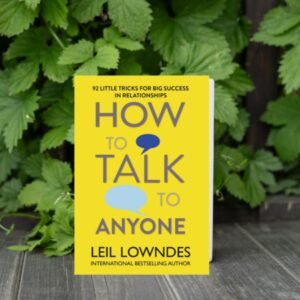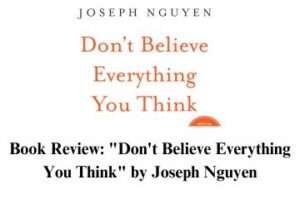About the book: “How to Read a Person Like a Book”
“How to Read a Person Like a Book” is a captivating guide that delves into the intricate world of nonverbal communication and human behavior. Authored by Gerard I. Nierenberg and Henry H. Calero, this book is a valuable resource for anyone looking to enhance their understanding of interpersonal interactions.
How to Read a Person Like a Book is a reader-friendly format and engaging writing style making it accessible to individuals from all walks of life. Each chapter is filled with practical exercises, making it an interactive learning experience. By the end of the book, readers will have a newfound ability to decipher hidden messages, leading to more meaningful connections and improved communication.
A Brief Review of the Book: “How to Read a Person Like a Book”
How to Read a Person Like a Book employs a comprehensive approach to decoding body language, verbal cues, and facial expressions, allowing readers to gain insights into people’s thoughts and emotions. The authors expertly break down various aspects of communication, providing practical advice and real-life examples to illustrate their points.
One of the book’s strengths is its applicability to both personal and professional contexts. Whether you’re aiming to improve your relationships, excel in negotiations, or simply connect with others on a deeper level, the techniques outlined in this book prove incredibly useful.
The authors emphasize the importance of active listening and observation, guiding readers on how to pick up on subtle signs that reveal unspoken feelings and intentions. This skill becomes particularly beneficial in situations where clear communication is crucial, such as job interviews, business negotiations, or conflict resolution.
10 lessons to learn from the book: “How to Read a person like a book”
- The Power of Observation: The book teaches us the importance of keen observation in understanding people. By paying attention to nonverbal cues like body language, facial expressions, and gestures, we can gain valuable insights into their thoughts and emotions.
- Active Listening: Effective communication involves not just speaking, but also actively listening. The book emphasizes the skill of active listening, where you not only hear the words but also pick up on underlying emotions and intentions.
- Body Language Speaks Volumes: People often communicate more through their body language than through words. Learning to interpret postures, gestures, and movements can provide clues about a person’s feelings and attitude.
- Detecting Deception: The book delves into the art of detecting lies and deception. It provides techniques to identify inconsistencies between verbal and nonverbal cues, helping us to be more discerning in our interactions.
- Understanding Microexpressions: Microexpressions are fleeting facial expressions that reveal true emotions. By learning to recognize these quick expressions, we can gain insight into a person’s genuine feelings, even when they are trying to conceal them.
- Adapting Communication Styles: People have different communication styles. By understanding these styles, we can adjust our approach to connect better with others, leading to more effective and harmonious interactions.
- Reading Emotional States: The book teaches us to read emotional states based on vocal cues, tone, and speech patterns. This insight can help us respond appropriately and empathetically in various situations.
- Creating a Positive First Impression: First impressions matter. The book provides strategies to convey confidence, warmth, and openness during initial interactions, setting a positive tone for future communication.
- Building Empathy: Developing empathy is crucial for understanding others on a deeper level. By practicing empathy, we can connect emotionally with people and build stronger, more meaningful relationships.
- Applying Skills in Various Contexts: The book highlights the versatility of these skills, showing how they can be applied in personal relationships, professional settings, negotiations, and conflict resolution. Mastering these techniques enhances our ability to navigate different situations successfully.
In essence, “How to Read a Person Like a Book” equips us with a valuable toolkit to decode the intricate language of human behavior. It empowers us to communicate more effectively, build stronger connections, and navigate the complexities of human interaction with greater insight and understanding.
In conclusion, “How to Read a Person Like a Book” is an invaluable resource for anyone seeking to sharpen their interpersonal skills and decode the mysteries of human behavior. Its insights empower readers to navigate social interactions with confidence, empathy, and a deeper understanding of the unspoken language that shapes our relationships.
Follow Reviewzade on Instagram for regular updates. Click here for more book reviews.




